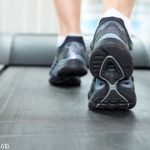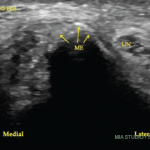
Beresnev / shutterstock.com
A patient’s gait, or how they walk, is an important predictor of the biomechanical load distribution that affects osteoarthritis (OA). This understanding comes from a growing body of literature in biomechanics to test and treat patients with OA, which takes into account a very practical treatment: a patient’s shoes.
A focus on flexible footwear, along with attention to healthy anatomical alignment, gait and load redistribution, can make a difference for patients with medial knee OA. This observation is based on several years of research, including a study analyzing flexible footwear and impact joint loads over several months, explains Najia Shakoor, MD, rheumatologist and professor in the Department of Internal Medicine at Rush University Medical Center, Chicago.1
Training Patients to Optimize Gait
Dr. Shakoor and her research colleagues believe patients with medial knee OA can be empowered to retrain how they walk to reduce pain and, possibly, slow their disease progression. “Sometimes, it comes down to a patient’s awareness and knowledge about the way they walk and the footwear they choose,” she says.
This perspective is based on ongoing research she and her colleagues have conducted that has shown patients with medial knee OA who wear flexible footwear for a sustained period of time change the way they walk, resulting in better knee load distribution. However, this research has also demonstrated that flexible footwear alone does not help every patient.2
As a result, Dr. Shakoor and her colleagues are now studying how flexible footwear and measuring the pressure distribution patterns of the feet during walking can be used together to help patients with OA walk differently. For this current investigation, participants with medial knee OA are asked to wear a flexible shoe outfitted with a pressure-detecting insole that reads the patient’s foot load distribution. The patient is trained to alter this foot pressure distribution to improve the knee load distribution while walking. The insole wirelessly communicates with a handheld device so that participants can train at home.
Discussing Flexible Footwear
In treating patients with a degenerative disease, such as OA, any practical advice a physician can give a patient is valuable, Dr. Shakoor says.
Although research into how footwear may reduce knee load distribution is not new, it continues to evolve, and Dr. Shakoor encourages all rheumatologists treating patients with knee OA to make sure they keep up with the research.
“Footwear isn’t always part of the discussion between a rheumatologist and a patient with knee OA during a clinic visit, but it should be. It may make a difference,” she says. “Taking action to help their disease in any way is important to patients. That’s why it needs to be important to us.”
When discussing flexible footwear with patients who have medial knee OA, Dr. Shakoor suggests rheumatologists address the following key elements:
- Choose a shoe that can bend in half: This bend test can help patients easily identify if the shoe is flexible enough;
- Avoid a heeled shoe: Based on an investigation of moderately heeled shoes and their impacts on knees, Dr. Shakoor suggests that any type of heel on a shoe can disrupt knee alignment and load distribution;3
- Gait retraining may enhance the benefits of flexible footwear: Not every patient with medial knee OA who switches to flexible footwear feels or displays improvement in their disease, Dr. Shakoor cautions. “A patient may need additional attention to the way they walk to improve alignment of their lower extremities,” she notes;
- A slow progression to a flexible shoe may help some patients: Dr. Shakoor says a very flat, flexible shoe may be a big change from what a patient is used to. “If this is the case, the patient may want to start wearing a flexible shoe for limited time [frames] and slowly build up wear time once the shoe feels more comfortable,” she says; and
- Patients with foot OA and lateral knee OA may need different support: The research on flexible footwear has been done on people with medial knee OA. “It’s important to help patients understand that flexible footwear is not the best treatment approach for everyone,” Dr. Shakoor says. “A conversation about footwear is important for all patients with OA, because different biomechanical factors can be at play. The best footwear choice a patient can make depends on the patient and type of OA.”
Carina Stanton is a freelance science journalist based in Denver.
Additional Resources
- Read more about Dr. Shakoor’s research on contributors to knee load redistribution using flexible footwear.
- Learn more about research at Rush University Medical Center on a smart shoe insole for patients with knee OA.
- Read about joint loading and footwear in elderly women with knee OA.
References
- Shakoor N, Lidtke RH, Wimmer MA, et al. Improvement in knee loading after use of specialized footwear for knee osteoarthritis: Results of a six-month pilot investigation. Arthritis Rheum. 2013;65(5):1282–1289.
- Shakoor N, Sengupta M, Foucher KC, et al. Effects of common footwear on joint loading in osteoarthritis of the knee. Arthritis Care Res (Hoboken). 2010 Jul;62(7):917–923.
- Kerrigan DC, Johansson JL, Bryant MG, et al. Moderate-heeled shoes and knee joint torques relevant to the development and progression of knee osteoarthritis. Arch Phys Med Rehabil. 2005 May;85(5):871–875.


